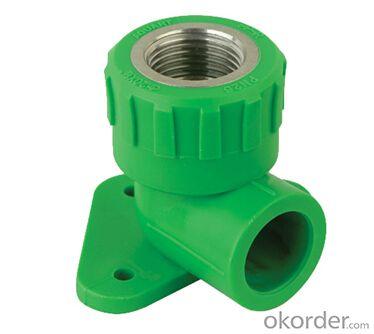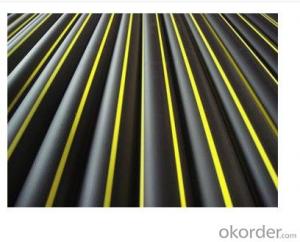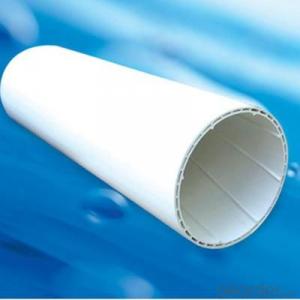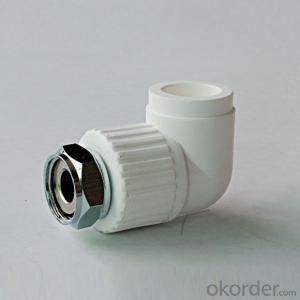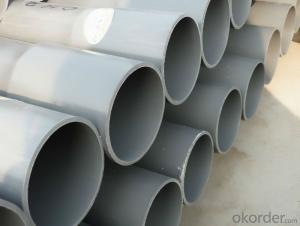Plastic Tubes PPR Fitting Elbow with Seat from Top Chinese Factory Compliant with Food Hygiene Regulations
- Loading Port:
- Tianjin
- Payment Terms:
- L/C,T/T
- Min Order Qty:
- 1000 pc
- Supply Capability:
- 100000 pc/month
OKorder Service Pledge
OKorder Financial Service
You Might Also Like
Product Features
1. Corrosion resistance
PPR pipes and fittings can resistant to most chemical corrosion; it can withstand PH value range 1-14 high concentration of acid and alkali corrosion over a wide temperature range.
2. Installation performance
PPR pipe PPR pipe is light in weight, and the operation installation is easy, which make it available to weld again. It is very important that pipe and pipe fittings can be welded together in seconds with a simple tool. Compared to traditional connection methods it can save 40%~50% of the time.
3. Safety Indicators
The basic component of PPR is carbon and hydrogen which is simple. It keeps in line with food hygiene regulations, non-toxic. If you use PPR pipe, there will no dirt in the inner wall or “secondary water pollution” caused by rust any more.PPR pipe ,green building materials, is more suitable for transporting drinking water.
Advantages of PPR pipe
1. Maximum operating temperature can up to 95℃; it can work in a long term under the condition of 70℃ and 1.0Mpa.
2. PPR pipe density is only 1/8 of metal pipe; pressure resistance strength test is up 5Mpa, with good toughness, impact resistance.
3. Inner diameter of PPR pipe is little bigger than that of pipe fittings, which can ensure not to increase the resistance to fluid flow.
4. Inner wall of PPR pipe is smooth, no rust, no scaling, small fluid resistance
5. PPR pipe has excellent insulation properties, can significantly reduce the vibration and noise caused by the flow of liquid.
6. PPR pipe energy consumption is only 20% of steel pipe; its thermal coefficient is also only 1/200 of steel pipe, reducing heat loss greatly.
7. PPR pipe is poor electrical conductor material, which can avoid galvanic corrosion phenomena.
8. With poor thermal conductivity, PPR pipe can reduce condensation.
9. PPR pipes, fittings are recyclable.





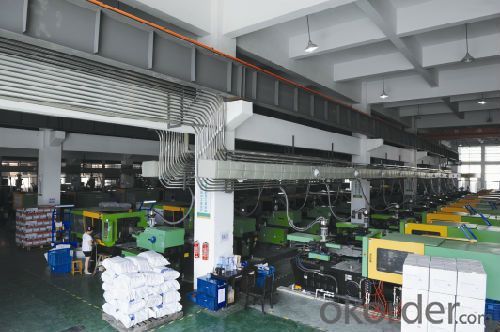



Application
1. Hot and cold drinking water supply system of civil and industrial buildings
2. Clean, pure water piping system
3. Beverage production and transport systems
4. Industrial liquid delivery system
5. Central air conditioning system
6. Hot water circulation Heating System
7. Compressed air piping system
8. Garden and greenhouse irrigation systems
Construction Installation Guide of PPR Pipe
I. General Provisions
1. Before the pipeline installation and construction, should be with the following conditions:
a Drawings and other technical documents complete, and has been drawing technical tests, meet the construction requirements;
b Construction plan, construction techniques, materials and other equipment to ensure the normal supply of construction;
c Should be applied to the technical training of personnel through building water supply polypropylene pipeline installation.
2. Pipes and fittings provided shall meet the design requirements, along with the product specification and quality certification.
3. Do not use the material for signs of damage. Pipeline quality found abnormalities, should be identified prior to use technology or re-examination.
4. Pipeline system during installation openings should be blocked.
5. The construction should review the installation of cold, hot water pipe pressure rating and usage scenarios. Pipeline markers should be open to the outside, in a prominent position.
Second, the pipeline laying installation points
1. The pipe-wall Concealed, should be set aside with the civil recess dimensioned not specified, in-wall underground pipe wall groove depth De ten sizes 20mm, width of dry De + 40 ~ 60mm. Quiet concave surface must be smooth, without sharp corners and other projections, the pipeline pressure test, the groove wall with cement mortar to fill dense M7.5 class.
2. Pipeline Concealed in the floor surface, according to the design drawing position. As applied to the site there is a change, there should be shown the recording.
3. PPR installation, without axial distortion, when the wall or floor, the correction should not be mandatory. Polypropylene water pipes should be laid in parallel with other metal pipes have some protection from the net distance should be less than 100mm, and it should polypropylene tubes on the inside of the metal pipe.
4. The indoor surface mounted pipeline, should be carried out after the completion of the civil whitewash, the installation should be reserved holes with the civil right or top manager sleeve.
5. The pipe through the floor should be provided with steel casing, the casing above the ground 50mm, and a waterproofing. If the pipeline crosses roofing, waterproofing should be taken strict measures. It should be set through the front-end bracket.
6. When the hot water pipes through the wall, should be set up with civil steel casing, when the cold water pipe through the wall, can be reserved hole, the hole size than the outer diameter of 50mm.
7. Buried in the ground floor surface as well as inside the pipe wall, pressure test should be prepared and hidden works acceptance records for shelter before the closure.
8. Building physics introduction pipe and buried pipe laying indoor requirements are as follows:
a. Indoor floor the following pipeline 0.00 disabilities should be divided in two phases. 0.00 The following persons Floor laying the foundation wall to wall section to be first; after the paternity civil construction, then the outdoor connection pipe laying;
b. Indoor floor the following pipeline should be after the construction backfill compaction, re-excavation carried out. Prohibited in the soil before or without backfill compaction of laying;
c. The laying of the pipeline ditch should be flat; one must highlight the sharp hard object. Soil particle diameter of is not more than 12mm, to 100mm thick sand cushion shop when necessary.
d. When the buried pipeline backfill, backfill pipe circumference shall inclusion sharp hard object from indirect contact with the wall. Backfill soil should be sand or particles of diameter of not more than 12mm to the top of the pipe at the side 300mrn, after compaction before backfill the original soil. Indoor buried pipeline buried depth of not less than 300mnl;
e. Pipeline floor should be set at a protective tube with a height above ground assessment 100mnl;
f. The pipeline through the foundation wall should be provided with a metal sleeve. Casing and foundation wall reserved headroom above the hole, special design not less than 100mm;
g. Pipeline crossing the neighborhood road, when Futuhoudu less than 700mm, should adopt strict protection measures.
- Q: Are plastic tubes resistant to fire?
- No, plastic tubes are not generally resistant to fire.
- Q: where can i get a print out of all the clored tubes and what test is used for each tube for a phlebotomists ?
- Blood collection tubes must be drawn in a specific order to avoid cross-contamination of additives between tubes. The recommended order of draw for plastic vacutainer tubes is: First - blood culture bottle or tube (yellow or yellow-black top) Second - coagulation tube (light blue top). If just a routine coagulation assay is the only test ordered, then a single light blue top tube may be drawn. If there is a concern regarding contamination by tissue fluids or thromboplastins, then one may draw a non-additive tube first, and then the light blue top tube. Third - non-additive tube (red top) Last draw - additive tubes in this order: SST (red-gray or gold top). Contains a gel separator and clot activator. Sodium heparin (dark green top) PST (light green top). Contains lithium heparin anticoagulant and a gel separator. EDTA (lavender top) ACDA or ACDB (pale yellow top). Contains acid citrate dextrose. Oxalate/fluoride (light gray top)
- Q: I have a long flexible 1 plastic tube that is attached to itself forming a closed circuit and I'd like to add an electric blower to it to flow air continuously that will make a small ball go around continuously. I'd like to splice the blower into the 1 plastic tube but need to know where or how to exhaust the air to keep the air circuit moving continuously in one direction.
- there may be an easier way... use a y connection to join the tube.. the blower is one part of the y it forces the air into the tube at an angle.. the ball will then move past the spot where the pump is blowing pump y .................y ......................y h h h y.....y........y.h.h.h.h the h's are then connected end to end and the ball willl move clockwise .. remember that you are forcing air into a closed system so you will have to put some vent holes in the hose to allow some air to escape or put a pressure release valve to let the pressure drop when its too high..
- Q: I used a tube to transport diesel to another container and I was wondering if it's possible to clean the tube at all.
- Plastic tubing is pours . Yes it absorbs color of the liquid that was in it .
- Q: Are plastic tubes suitable for pneumatic control systems?
- Yes, plastic tubes are suitable for pneumatic control systems. They are lightweight, flexible, and can withstand high pressures. Additionally, plastic tubes are resistant to corrosion, which is beneficial in pneumatic systems that may come into contact with moisture or chemicals.
- Q: UPVC pipe, HDPE pipe construction, useful 360 degrees full package foundation, what does that mean, gravel cap or concrete?.
- This plastic pipe construction, generally use medium sand as a foundation, pipe installation, the pipe surface to the top of the pipe above the scope of 500mm generally backfill sand
- Q: Are plastic tubes suitable for chemical storage?
- Plastic tubes can be suitable for chemical storage depending on the type of chemical being stored and the specific properties of the plastic material. It is essential to consider factors such as chemical compatibility, temperature resistance, and potential reactions between the chemical and the plastic. Additionally, proper labeling, sealing, and storage conditions should be followed to ensure safety and prevent any leakage or degradation of the plastic tubes.
- Q: How do you prevent plastic tubes from yellowing?
- To prevent plastic tubes from yellowing, it is essential to store them in a cool, dark, and dry place, away from direct sunlight and heat sources. UV radiation and high temperatures can accelerate the yellowing process. Additionally, avoiding exposure to chemicals, such as cleaning agents or solvents, can help maintain the clarity and color of the tubes. Regular cleaning with mild soap and water can also help prevent discoloration.
- Q: Can PVC pipes be used with drinking water?
- PVC is for heat sensitive plastics, PVC, when processing products must be added to the forming of heat stabilizer.At present, the main types of heat stabilizers are lead salt stabilizer, organotin stabilizer and calcium zinc composite stabilizer.As the lead salt stabilizer has great advantages in stability and cost, it has always been the first choice of heat stabilizer for PVC products,
- Q: What are the advantages of using plastic tubes in the agricultural sector?
- Plastic tubes offer several advantages in the agricultural sector. Firstly, they are lightweight and easy to install, making them cost-effective and time-efficient. Additionally, plastic tubes are highly durable and resistant to weather conditions, ensuring a longer lifespan and reduced maintenance. They also provide flexibility in irrigation systems, allowing for precise water distribution and minimizing water wastage. Moreover, plastic tubes are resistant to chemicals and UV rays, making them suitable for various agricultural applications. Overall, their affordability, durability, and versatility make plastic tubes a beneficial choice for the agricultural industry.
Send your message to us
Plastic Tubes PPR Fitting Elbow with Seat from Top Chinese Factory Compliant with Food Hygiene Regulations
- Loading Port:
- Tianjin
- Payment Terms:
- L/C,T/T
- Min Order Qty:
- 1000 pc
- Supply Capability:
- 100000 pc/month
OKorder Service Pledge
OKorder Financial Service
Similar products
Hot products
Hot Searches
Related keywords


